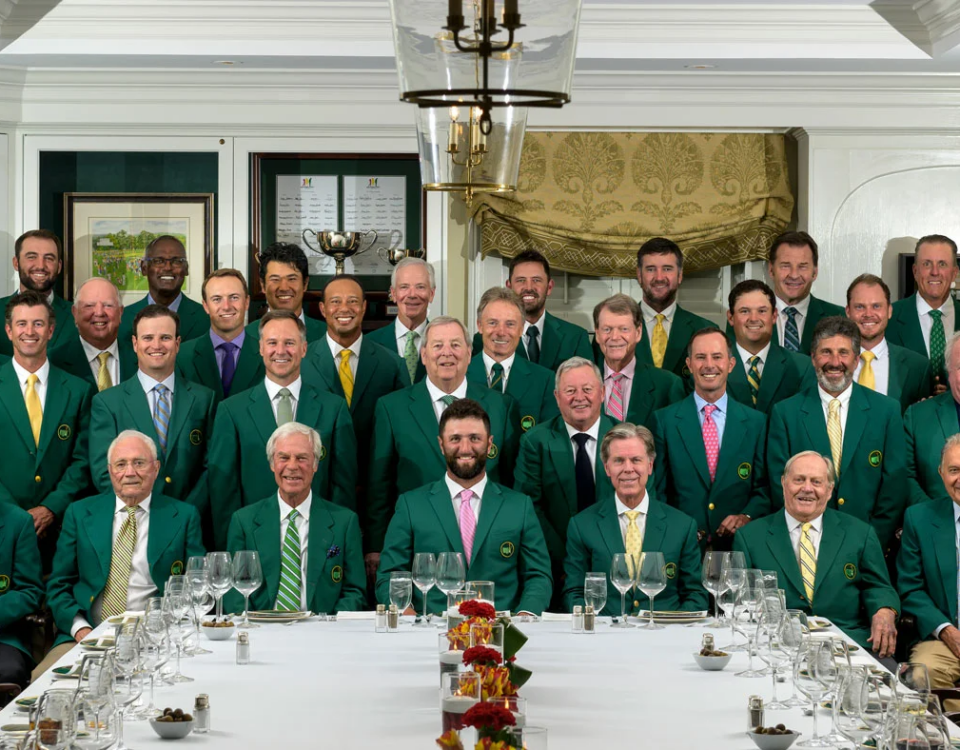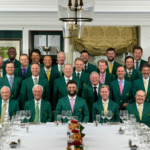
The MOST EXCLUSIVE DINNER INVITE IN THE WORLD OF SPORT!!
April 10, 2024
WILL PINEHURST WITNESS ANOTHER ROUT LIKE 2014?
June 12, 2024JACK’S MASTERPIECE WILL TEST THE VERY BEST
Valhalla Golf Club, a masterpiece crafted by the legendary Jack Nicklaus, has in its relatively short life stood as a beacon of golfing excellence in Kentucky. Not only has it been consistently ranked No. 1 in the state, but it also proudly features on Golf Digest’s list of “America’s 100 Greatest Courses.” The course is set to welcome the PGA Championship for the fourth time in 2024, adding another unique chapter to the tournaments rich history.
Valhalla has already been the backdrop to thrilling moments in golf. From Mark Brooks’ unexpected triumph to Tiger Woods’ memorable putts and celebrations and from Rory McIlroy’s dramatic win in the darkness to a Ryder Cup, the course has seen its fair share of drama and excitement. Each event has contributed to its growing legacy, highlighting the course’s challenging layout and the heroic feats of those who conquer it.
As this years USPGA now approaches, Valhalla is poised to host another memorable Championship. The course’s history promises that we are in for a spectacular event, breathtaking scenery and layout, and perhaps a few surprises that will add to its legacy.


Situated on a challenging terrain where half of the land was initially a floodplain dotted with high-tension power poles, Valhalla Golf Club is a testament to the genius of Jack Nicklaus. Drawing upon his experience under the guidance of renowned architects Pete Dye and Desmond Muirhead, Nicklaus crafted a distinctive course layout. His innovative design includes a par 5 with an alternate fairway, a daring par 4 featuring an island green, and an 18th green shaped like a horseshoe, each adding a unique character to the course.
Over the years, Nicklaus has returned periodically to refine and enhance the course’s features, ensuring that Valhalla remains a stern test for the world’s best golfers. In 2022, the club undertook significant upgrades to further elevate the playing conditions; the soft bent grass fairways were replaced with firmer, faster zoysia grass, and the bunkers were meticulously rebuilt. These improvements have bolstered Valhalla’s reputation as a premier championship venue.
Valhalla’s evolution from a difficult piece of land to a celebrated championship site encapsulates a journey of visionary design and continuous improvement. Its challenging layout and the strategic nuances embedded by Nicklaus ensure that each championship held here is not just a test of skill, but an overwhelming test of nerve.
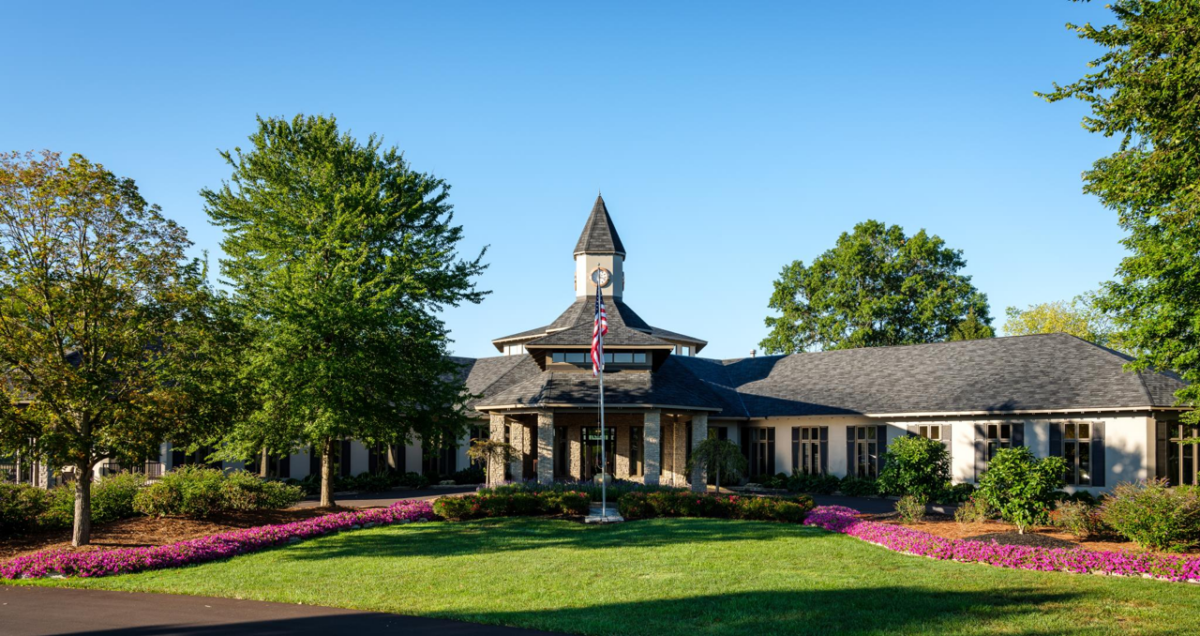
Valhalla Golf Club, named after the majestic hall from Norse mythology where Viking warriors feasted and celebrated with gods, stands as a modern sanctuary for championship golf. This world-class course, the brainchild of Dwight Gahm, was designed with a grand vision—to host major golf championships and to establish Louisville as a recurrent host city for top-tier golf events. It’s a place where The PGA of America made history by choosing it as their first owned championship site.
Spanning over 500 acres of rolling Kentucky hills, Valhalla offers more than just a game—it presents a breathtaking golf theater. Here, every fairway and green is maintained with impeccable care, ensuring an exceptional experience for both members and guests. As the only private golf club owned and operated by the PGA of America, Valhalla holds a unique place in the golfing world.
The course is also an Audubon-certified sanctuary, a testament to its harmony with the natural environment. Spanning 256 acres, the sanctuary is home to a variety of birds and wildlife, offering players a moment of tranquility and a chance to appreciate the beauty of nature amidst the game. The presence of Floyd’s Fork, a stream that weaves through the landscape, adds to the serene setting. It serves not only as a picturesque backdrop but also plays a strategic role in the challenge golfers have to consider with each shot.

THE WANNAMAKER AND THE HISTORY OF THE USPGA
The origins of the PGA Championship and the Wanamaker Trophy are tightly woven into the fabric of professional golf in the United States. The concept was first imagined by Rodman Wanamaker, a visionary department store magnate, who saw the need for a national tournament to elevate the stature of professional golf in America. His groundbreaking idea came to fruition during a historic luncheon at the Taplow Club in New York City in 1916, where Wanamaker put forward the notion of establishing a professional golfers’ association and a championship to rival the British Open, the premier golf event accessible to American players at the time.
This meeting led to the creation of the PGA of America, and the inaugural PGA Championship was staged later that same year at the Siwanoy Country Club in Bronxville, New York. To underscore the significance and prestige of the championship, Wanamaker donated an impressive trophy, which would soon be named after him. The Wanamaker Trophy, a monumental achievement in silversmithing, stands approximately 28 inches tall and weighs around 27 pounds. Designed as a perpetual trophy, it is inscribed annually with the names of the winners, cementing their legacies within the pantheon of golf greats. This trophy not only symbolizes triumph but also serves as a lasting emblem of the enduring spirit and growing prestige of the PGA Championship.
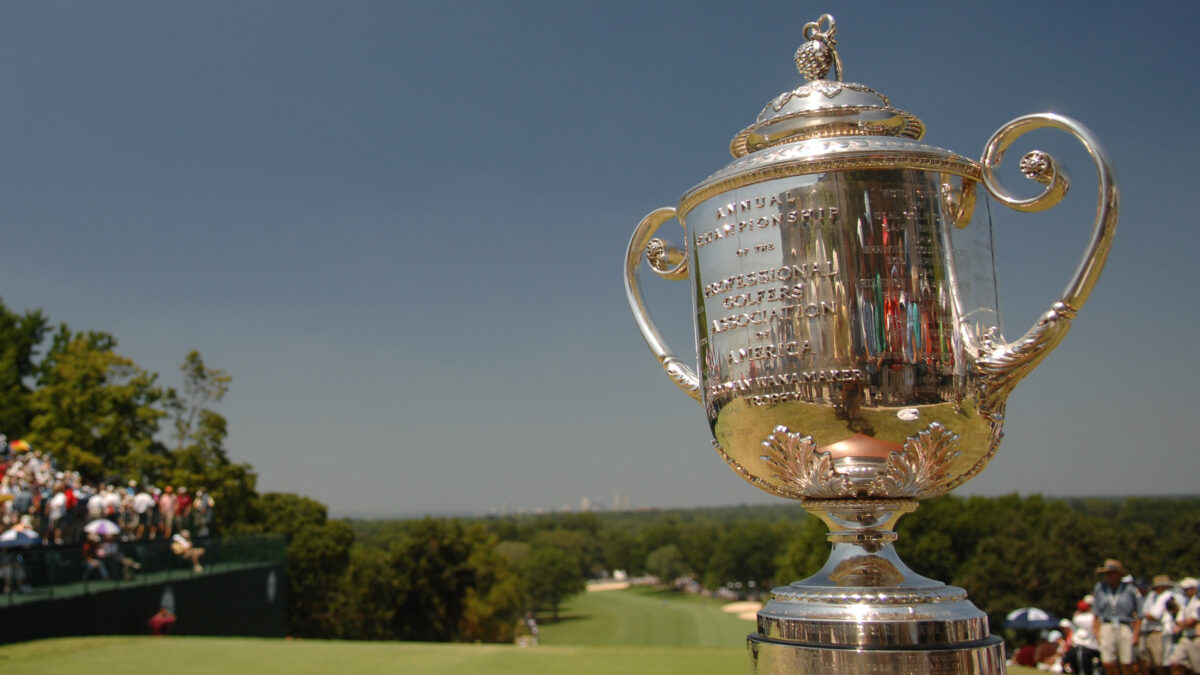
The Wanamaker Trophy quickly became a symbol of ultimate achievement in professional golf, representing both the history and the competitive spirit of the PGA Championship. Over the years, it has been held aloft by many of golf’s greatest players, each adding their story to its rich legacy. As such, the PGA Championship and its iconic trophy continue to hold a place of honor as one of the four major championships in professional golf, attracting the world’s best golfers to compete for a piece of history.
THE EARLY YEARS AND THE MISSING WANNAMAKER
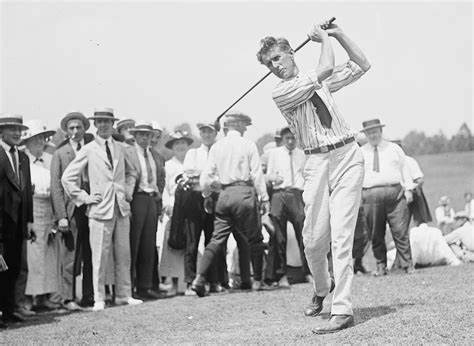
Jim Barnes won the first two PGA Championships and was the first to have his name etched on the Wanamaker Trophy. Then came Jock Hutchison, Walter Hagen and Gene Sarazen, and then Hagen again, and it was after Hagen’s second PGA Championship victory that things got interesting.
Hagen took home the Wanamaker Trophy for four straight years, from 1924-27, and its whereabouts seemed insignificant.
He was asked at the 1926 award ceremony why he didn’t have the trophy, and replied that he hadn’t brought it with him because he had no intention of surrendering it.

But that’s just what happened two years later in 1928. Leo Diegel beat Hagen in the quarter finals and went on to win the title, but when the time came for Hagen to hand over the Wanamaker Trophy after his long reign, he was forced to admit that he had lost it.
The story around its disappearance is vague to say the least, but the gist is that Hagen went partying after winning his seventh major championship at the 1925 PGA Championship at Olympia Fields in Chicago. During his celebrations he jumped out of a cab to join some friends who were heading into a nightclub and left the Wanamaker Trophy behind.
Hagen claims he paid the taxi driver to deliver it to his hotel, but it never arrived. Instead, it somehow made its way from Chicago to Detroit, where it was found five years later in 1930 in an unmarked case in the basement of L.A. Young & Company, the firm that made Hagen’s golf clubs.
Lost? Misplaced? Tucked away? No one knows for sure.
In its absence, The PGA of America had a duplicate of the Wanamaker Trophy made. Once the original was recovered, it was retired, and it is now on display at the PGA Historical Centre in Florida. Champions’ names are still added annually to the original, but it is the more recent version that the PGA Championship winners now pose with.
This period what would be known as the match play era, lasted until 1957. The format, where players competed head-to-head in a knockout style rather than against the field, created dramatic and memorable contests that deeply ingrained the championship in the fabric of American sports.
The first tournament was held at Siwanoy Country Club in Bronxville, New York, and was won by Englishman Jim Barnes. In these early years, the championship was not merely a test of golfing skill but also a showcase of endurance and strategy, highlighting the dramatic nature of match play. This era was dominated by legendary figures such as Walter Hagen and Gene Sarazen, both of whom became icons through their performances in the PGA Championship. Hagen, in particular, left a lasting mark by winning the title five times between 1921 and 1927, a record for the match play format.
PGA Championship Winners (Match Play Era: 1916-1957)
| Year | Winner | Score | Venue |
|---|---|---|---|
| 1916 | Jim Barnes | 1 up | Siwanoy Country Club, Bronxville, New York |
| 1917 | No tournament | — | — |
| 1918 | No tournament | — | — |
| 1919 | Jim Barnes | 6 & 5 | Engineers Country Club, Roslyn, New York |
| 1920 | Jock Hutchison | 1 up | Flossmoor Country Club, Flossmoor, Illinois |
| 1921 | Walter Hagen | 3 & 2 | Inwood Country Club, Inwood, New York |
| 1922 | Gene Sarazen | 4 & 3 | Oakmont Country Club, Oakmont, Pennsylvania |
| 1923 | Gene Sarazen | 38 holes | Pelham Country Club, Pelham Manor, New York |
| 1924 | Walter Hagen | 2 up | French Lick Springs Resort, French Lick, Indiana |
| 1925 | Walter Hagen | 6 & 5 | Olympia Fields Country Club, Olympia Fields, Illinois |
| 1926 | Walter Hagen | 5 & 3 | Salisbury Golf Club, Westbury, New York |
| 1927 | Walter Hagen | 1 up | Cedar Crest Country Club, Dallas, Texas |
| 1928 | Leo Diegel | 6 & 4 | Five Farms Country Club, Baltimore, Maryland |
| 1929 | Leo Diegel | 6 & 4 | Hillcrest Country Club, Los Angeles, California |
| 1930 | Tommy Armour | 1 up | Fresh Meadow Country Club, Great Neck, New York |
| 1931 | Tom Creavy | 2 & 1 | Wannamoisett Country Club, Rumford, Rhode Island |
| 1932 | Olin Dutra | 4 & 3 | Keller Golf Course, Maplewood, Minnesota |
| 1933 | Gene Sarazen | 5 & 4 | Blue Mound Golf & Country Club, Wauwatosa, Wisconsin |
| 1934 | Paul Runyan | 38 holes | The Park Country Club, Williamsville, New York |
| 1935 | Johnny Revolta | 5 & 4 | Twin Hills Golf & Country Club, Oklahoma City, Oklahoma |
| 1936 | Denny Shute | 3 & 2 | Pinehurst Resort, Pinehurst, North Carolina |
| 1937 | Denny Shute | 37 holes | Pittsburgh Field Club, Pittsburgh, Pennsylvania |
| 1938 | Paul Runyan | 8 & 7 | The Shawnee Inn & Golf Resort, Shawnee on Delaware, Pennsylvania |
| 1939 | Henry Picard | 37 holes | Pomonok Country Club, Flushing, New York |
| 1940 | Byron Nelson | 1 up | Hershey Country Club, Hershey, Pennsylvania |
| 1941 | Vic Ghezzi | 38 holes | Cherry Hills Country Club, Cherry Hills Village, Colorado |
| 1942 | Sam Snead | 2 & 1 | Seaview Country Club, Atlantic City, New Jersey |
| 1943 | No tournament | — | — |
| 1944 | Bob Hamilton | 1 up | Manito Golf and Country Club, Spokane, Washington |
| 1945 | Byron Nelson | 4 & 3 | Moraine Country Club, Dayton, Ohio |
| 1946 | Ben Hogan | 6 & 4 | Portland Golf Club, Portland, Oregon |
| 1947 | Jim Ferrier | 2 & 1 | Plum Hollow Country Club, Southfield, Michigan |
| 1948 | Ben Hogan | 7 & 6 | Norwood Hills Country Club, St. Louis, Missouri |
| 1949 | Sam Snead | 3 & 2 | Hermitage Country Club, Richmond, Virginia |
| 1950 | Chandler Harper | 4 & 3 | Scioto Country Club, Columbus, Ohio |
| 1951 | Sam Snead | 7 & 6 | Oakmont Country Club, Oakmont, Pennsylvania |
| 1952 | Jim Turnesa | 1 up | Big Spring Country Club, Louisville, Kentucky |
| 1953 | Walter Burkemo | 2 & 1 | Birmingham Country Club, Birmingham, Michigan |
| 1954 | Chick Harbert | 4 & 3 | Keller Golf Course, Maplewood, Minnesota |
| 1955 | Doug Ford | 4 & 3 | Meadowbrook Country Club, Northville, Michigan |
| 1956 | Jack Burke Jr. | 3 & 2 | Blue Hill Golf Course, Pearl River, New York |
| 1957 | Lionel Hebert | 2 & 1 | Miami Valley Golf Club, Dayton, Ohio |
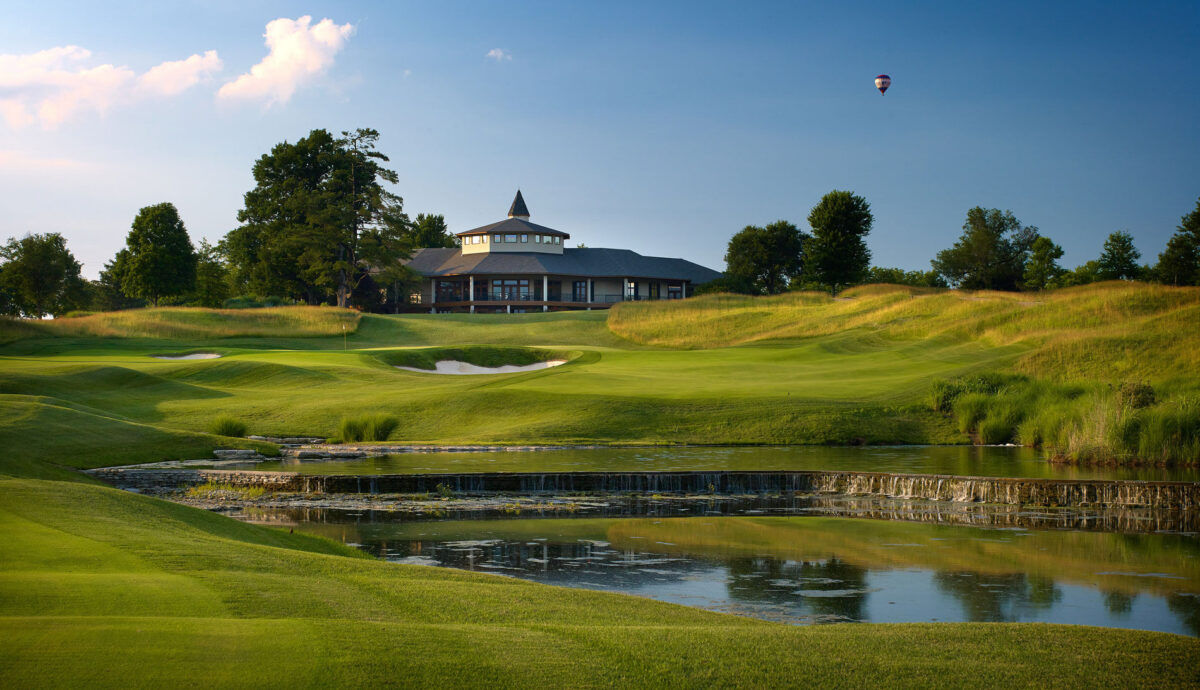
The decision to shift from match play to stroke play in 1958 marked the end of an era. This change was made to better accommodate television broadcasting and to align the PGA Championship with the other major tournaments, which were all played under stroke play formats. However, the match play years remain a celebrated chapter in the championship’s history, remembered for its compelling narratives and the legendary figures who shaped its legacy.
PGA Championship Winners (Stroke Play Era: 1958-2023)
| Year | Winner | Score | Venue |
|---|---|---|---|
| 1958 | Dow Finsterwald | 276 (-4) | Llanerch Country Club, Havertown, Pennsylvania |
| 1959 | Bob Rosburg | 277 (-3) | Minneapolis Golf Club, St. Louis Park, Minnesota |
| 1960 | Jay Hebert | 281 (+1) | Firestone Country Club, Akron, Ohio |
| 1961 | Jerry Barber | 277 (-3) | Olympia Fields Country Club, Olympia Fields, Illinois |
| 1962 | Gary Player | 278 (-2) | Aronimink Golf Club, Newtown Square, Pennsylvania |
| 1963 | Jack Nicklaus | 279 (-5) | Dallas Athletic Club, Dallas, Texas |
| 1964 | Bobby Nichols | 271 (-9) | Columbus Country Club, Columbus, Ohio |
| 1965 | Dave Marr | 280 (-4) | Laurel Valley Golf Club, Ligonier, Pennsylvania |
| 1966 | Al Geiberger | 280 (-4) | Firestone Country Club, Akron, Ohio |
| 1967 | Don January | 281 (-7) | Columbine Country Club, Littleton, Colorado |
| 1968 | Julius Boros | 281 (+1) | Pecan Valley Golf Club, San Antonio, Texas |
| 1969 | Raymond Floyd | 276 (-8) | NCR Country Club, Dayton, Ohio |
| 1970 | Dave Stockton | 279 (-1) | Southern Hills Country Club, Tulsa, Oklahoma |
| 1971 | Jack Nicklaus | 281 (+1) | PGA National Golf Club, Palm Beach Gardens, Florida |
| 1972 | Gary Player | 281 (+1) | Oakland Hills Country Club, Bloomfield Hills, Michigan |
| 1973 | Jack Nicklaus | 277 (-7) | Canterbury Golf Club, Beachwood, Ohio |
| 1974 | Lee Trevino | 276 (-4) | Tanglewood Park, Clemmons, North Carolina |
| 1975 | Jack Nicklaus | 276 (-4) | Firestone Country Club, Akron, Ohio |
| 1976 | Dave Stockton | 281 (+1) | Congressional Country Club, Bethesda, Maryland |
| 1977 | Lanny Wadkins | 282 (-6) | Pebble Beach Golf Links, Pebble Beach, California |
| 1978 | John Mahaffey | 276 (-8) | Oakmont Country Club, Oakmont, Pennsylvania |
| 1979 | David Graham | 272 (-8) | Oakland Hills Country Club, Bloomfield Hills, Michigan |
| 1980 | Jack Nicklaus | 274 (-6) | Oak Hill Country Club, Rochester, New York |
| 1981 | Larry Nelson | 273 (-7) | Atlanta Athletic Club, Duluth, Georgia |
| 1982 | Raymond Floyd | 272 (-8) | Southern Hills Country Club, Tulsa, Oklahoma |
| 1983 | Hal Sutton | 274 (-10) | Riviera Country Club, Pacific Palisades, California |
| 1984 | Lee Trevino | 273 (-15) | Shoal Creek Golf and Country Club, Birmingham, Alabama |
| 1985 | Hubert Green | 278 (-6) | Cherry Hills Country Club, Cherry Hills Village, Colorado |
| 1986 | Bob Tway | 276 (-8) | Inverness Club, Toledo, Ohio |
| 1987 | Larry Nelson | 287 (-1) | PGA National Resort & Spa, Palm Beach Gardens, Florida |
| 1988 | Jeff Sluman | 272 (-12) | Oak Tree Golf Club, Edmond, Oklahoma |
| 1989 | Payne Stewart | 276 (-12) | Kemper Lakes Golf Club, Hawthorn Woods, Illinois |
| 1990 | Wayne Grady | 282 (-6) | Shoal Creek Golf and Country Club, Birmingham, Alabama |
| 1991 | John Daly | 276 (-12) | Crooked Stick Golf Club, Carmel, Indiana |
| 1992 | Nick Price | 278 (-6) | Bellerive Country Club, Town and Country, Missouri |
| 1993 | Paul Azinger | 272 (-12) | Inverness Club, Toledo, Ohio |
| 1994 | Nick Price | 269 (-11) | Southern Hills Country Club, Tulsa, Oklahoma |
| 1995 | Steve Elkington | 267 (-17) | Riviera Country Club, Pacific Palisades, California |
| 1996 | Mark Brooks | 277 (-11) | Valhalla Golf Club, Louisville, Kentucky |
| 1997 | Davis Love III | 269 (-11) | Winged Foot Golf Club, Mamaroneck, New York |
| 1998 | Vijay Singh | 271 (-9) | Sahalee Country Club, Sammamish, Washington |
| 1999 | Tiger Woods | 277 (-11) | Medinah Country Club, Medinah, Illinois |
| 2000 | Tiger Woods | 270 (-18) | Valhalla Golf Club, Louisville, Kentucky |
| 2001 | David Toms | 265 (-15) | Atlanta Athletic Club, Duluth, Georgia |
| 2002 | Rich Beem | 278 (-10) | Hazeltine National Golf Club, Chaska, Minnesota |
| 2003 | Shaun Micheel | 276 (-4) | Oak Hill Country Club, Rochester, New York |
| 2004 | Vijay Singh | 280 (-8) | Whistling Straits, Haven, Wisconsin |
| 2005 | Phil Mickelson | 276 (-4) | Baltusrol Golf Club, Springfield, New Jersey |
| 2006 | Tiger Woods | 270 (-18) | Medinah Country Club, Medinah, Illinois |
| 2007 | Tiger Woods | 272 (-8) | Southern Hills Country Club, Tulsa, Oklahoma |
| 2008 | Pádraig Harrington | 277 (-3) | Oakland Hills Country Club, Bloomfield Hills, Michigan |
| 2009 | Y.E. Yang | 280 (-8) | Hazeltine National Golf Club, Chaska, Minnesota |
| 2010 | Martin Kaymer | 277 (-11) | Whistling Straits, Haven, Wisconsin |
| 2011 | Keegan Bradley | 272 (-8) | Atlanta Athletic Club, Johns Creek, Georgia |
| 2012 | Rory McIlroy | 275 (-13) | Kiawah Island Golf Resort, Kiawah Island, South Carolina |
| 2013 | Jason Dufner | 270 (-10) | Oak Hill Country Club, Rochester, New York |
| 2014 | Rory McIlroy | 268 (-16) | Valhalla Golf Club, Louisville, Kentucky |
| 2015 | Jason Day | 268 (-20) | Whistling Straits, Haven, Wisconsin |
| 2016 | Jimmy Walker | 266 (-14) | Baltusrol Golf Club, Springfield, New Jersey |
| 2017 | Justin Thomas | 276 (-8) | Quail Hollow Club, Charlotte, North Carolina |
| 2018 | Brooks Koepka | 264 (-16) | Bellerive Country Club, Town and Country, Missouri |
| 2019 | Brooks Koepka | 272 (-8) | Bethpage Black Course, Bethpage, New York |
| 2020 | Collin Morikawa | 267 (-13) | TPC Harding Park, San Francisco, California |
| 2021 | Phil Mickelson | 282 (-6) | Kiawah Island Golf Resort, Kiawah Island, South Carolina |
| 2022 | Justin Thomas | 275 (-5) | Southern Hills Country Club, Tulsa, Oklahoma |
| 2023 | Brooks Koepka | 274 (-6) | Oak Hill Country Club, Rochester, New York |


WHAT WILL IT TAKE TO WIN AT VALHALLA?
Valhalla Golf Club, with its rolling terrain and varied challenges, typically favors players who excel in several key aspects of golf. Reflecting on previous PGA Championships held at Valhalla can provide insights into what type of player will likely succeed in the upcoming event.
Key Characteristics of Champions at Valhalla:
- Power and Distance Off the Tee:
- Valhalla is known for its length, and players who can drive the ball long have a distinct advantage, particularly on its longer par 5s and some demanding par 4s. This allows them to use shorter irons into greens, offering more control and better birdie opportunities.
- For instance, Rory McIlroy and Tiger Woods, both past winners here, utilised their driving strength to dominate the course, setting up shorter and more manageable approach shots.
- Accuracy and Strong Iron Play:
- While power is beneficial, accuracy cannot be understated—especially with approach shots to the greens. Valhalla’s green complexes are often elevated with severe undulations and protected by strategic bunkering.
- In 2014 Rory McIlroy excelled with his iron play, allowing him to navigate the challenging pin positions and secure scoring opportunities.
- Solid Putting and Short Game:
- The undulating greens at Valhalla demand proficiency in putting. Past winners have typically performed well on the greens during their winning rounds, managing both the speed and the break effectively.
- Effective short game skills around the greens also help recover from missed greens, crucial in maintaining momentum and saving par.
- Mental Toughness and Strategy:
- Valhalla’s PGA Championships have often been decided by narrow margins or in playoffs, indicating that mental toughness and strategic play are critical.
- Players must manage their game plan smartly, knowing when to be aggressive and when to play conservatively, as the course offers risk-reward opportunities that can be tempting but dangerous.
- Course Management:
- Knowledge and experience at Valhalla can be advantageous. Players familiar with the layout tend to make smarter decisions that align with the course’s challenges. Newer or less experienced players must rely on thorough course study and practice rounds.
Ideal Player Profile:
Given these characteristics, the type of player likely to succeed at Valhalla would be someone who combines power with precision, has a strong approach and short game, and exhibits great mental fortitude under pressure. Players who are currently excelling in strokes gained off-the-tee and approach-the-green, as well as those with strong putting stats over the recent season, would be prime candidates for success. Additionally, players who have shown the ability to rise to the occasion in majors or have previous experience at Valhalla with positive outcomes should be considered strong contenders.
Now a lot of that you will say is common sense but I have created my own short list and I believe based on the required skills, experience, temperament and form I am confident in saying…………

What do you think? Too safe? Give me your thoughts.











